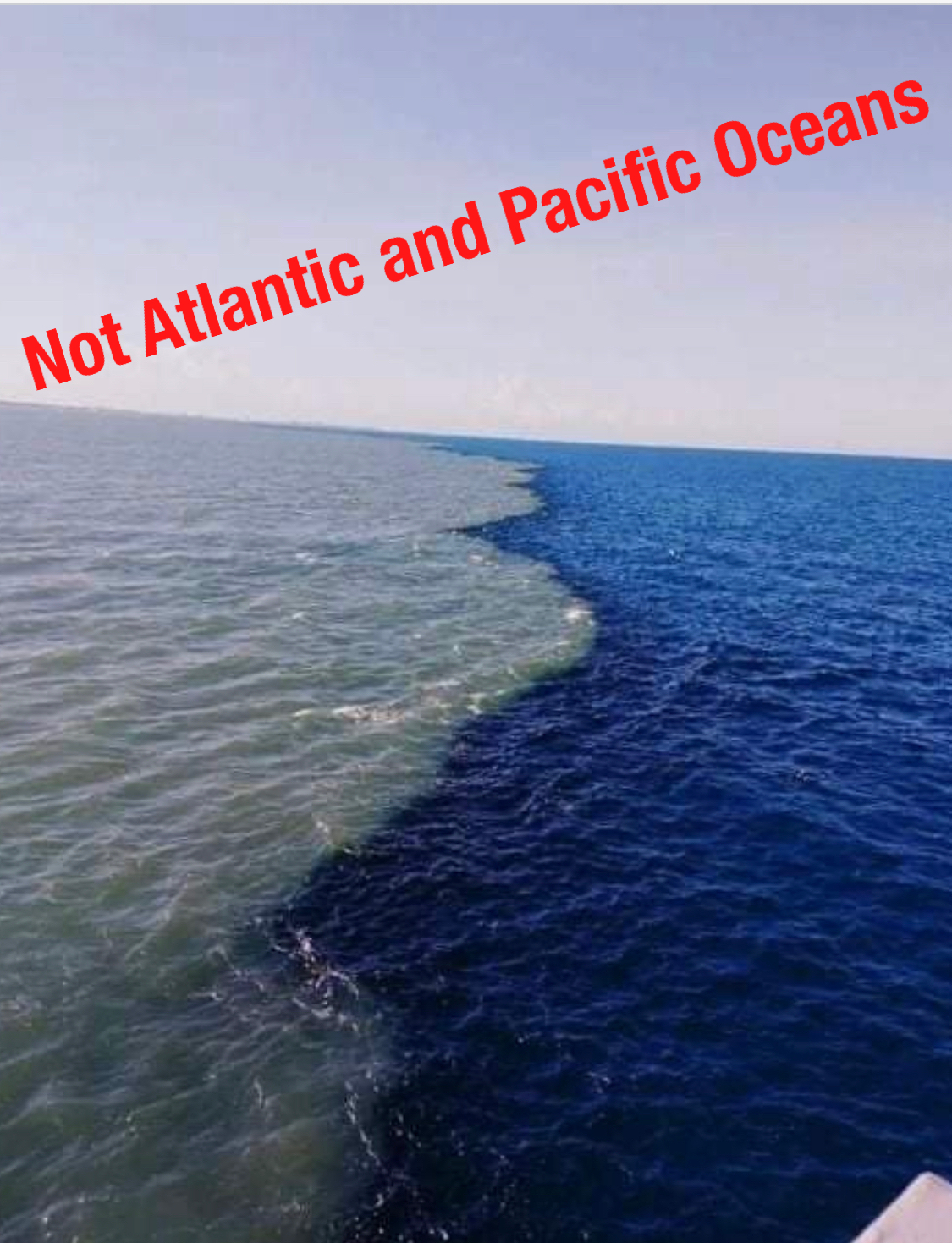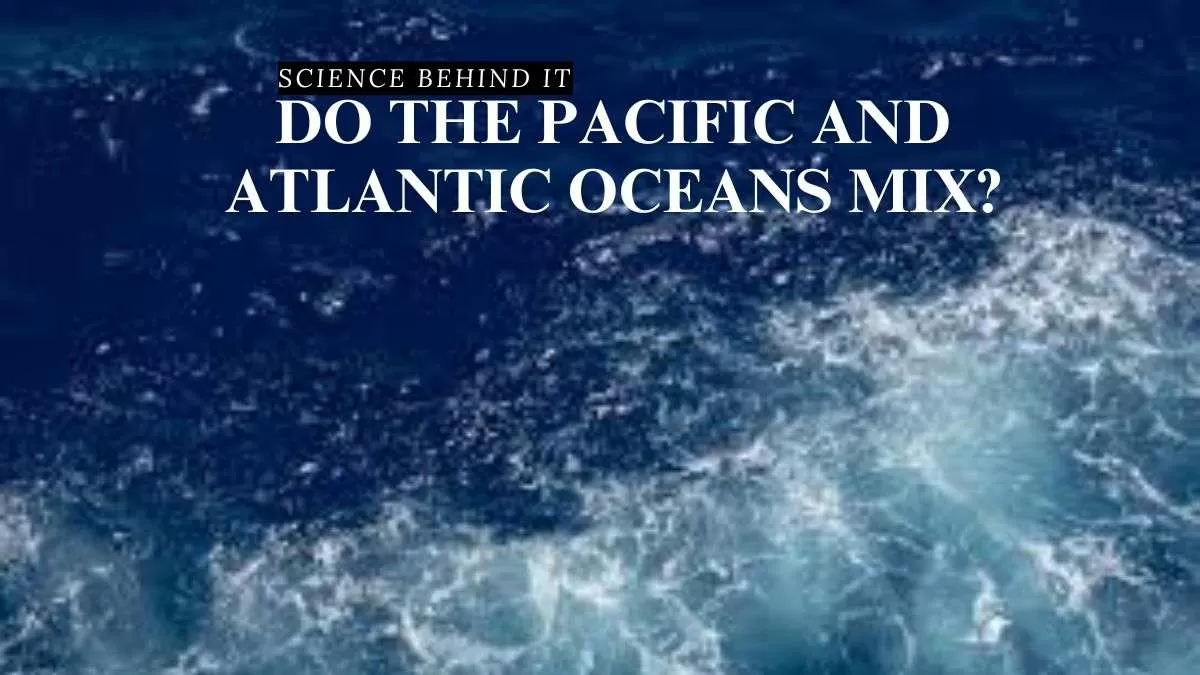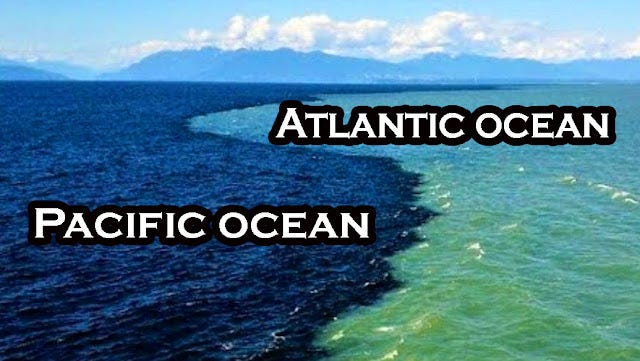Why Atlantic And Pacific Ocean Don't Mix

The Ocean Impasse: A Salty Standoff
Ever stared out at the ocean, feeling its vastness, and wondered if all that water just…mingles? The answer, surprisingly, is a bit more complicated than a simple "yes." It's like a giant, wet version of that awkward moment when two people try to hug and end up bumping noses.
Specifically, we're talking about the Atlantic and Pacific Oceans. These two giants meet, but they don't exactly become best buddies. It's more of a polite nod and a stiff upper lip situation.
The Great Divide: Where They Meet (Sort Of)
This watery rendezvous happens mostly off the coast of South America, near Cape Horn. It's a place of wild beauty and even wilder currents. Imagine two colossal water slides crashing into each other – that's the gist.
But instead of a harmonious splash, you get a visible line. A frothy, foamy, sometimes even colorful demarcation. This isn't just some trick of the light. There's actually a real reason why these oceans are giving each other the cold shoulder.
Density and Salinity: The Unlikely Culprits
Think of it like oil and water. They just don't mix, right? The Atlantic and Pacific have similar differences, namely density and salinity.
The Atlantic tends to be saltier than the Pacific. This is because more rivers drain into the Atlantic, carrying dissolved minerals that increase its salt content. It's like one ocean is secretly a salt fiend.
Also, the Atlantic is generally colder and denser. Cold water, packed with salt, is heavier. So, when these different water masses meet, they create a barrier. The denser, saltier Atlantic tends to sink below the less dense Pacific.
Current Affairs: A Helping Hand (or Fin)
Ocean currents also play a huge role. The powerful currents act like underwater highways, guiding water masses in specific directions. They reinforce the separation, preventing complete mixing.
It's like having a very strict traffic controller ensuring everyone stays in their lane. This is because of the Coriolis effect, which is cause by the Earth rotating!
A Visual Feast: Seeing is Believing
Witnessing this oceanic standoff is an incredible sight. You can see the line where the waters clash, often marked by different colors. Sometimes one side appears muddier, while the other boasts a clear, deep blue.
Photographers and travelers have captured stunning images of this phenomenon. It's a reminder that even in the vastness of our planet, boundaries exist.
More Than Just Water: A Story of Ecosystems
The fact that these oceans don't readily mix has huge implications for marine life. Different salinities and temperatures support different ecosystems. It helps with the distribution of marine species, from tiny plankton to giant whales.
It ensures biodiversity and allows unique underwater worlds to thrive. So, this "oceanic cold war" actually benefits the planet in the long run.
"The ocean is a mighty harmonist." – Joseph Conrad
This quote is ironic right?
Respecting Boundaries: A Lesson from the Seas
So, the next time you're gazing at the ocean, remember the tale of the Atlantic and Pacific. It's a reminder that even giants have their limits. These waters have their differences. It is a fantastic, natural phenomenon.
It's a beautiful, complicated system, and it shows us that sometimes, even in the biggest of ponds, it's okay to keep your distance. After all, a little bit of personal space never hurt anyone, not even the oceans.

















